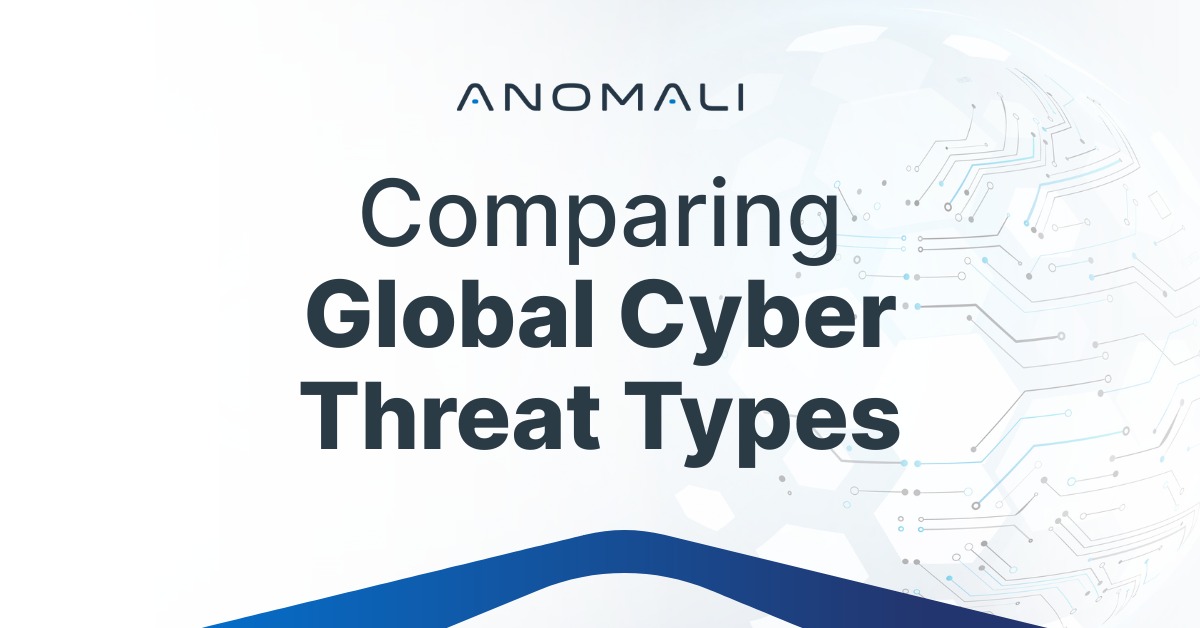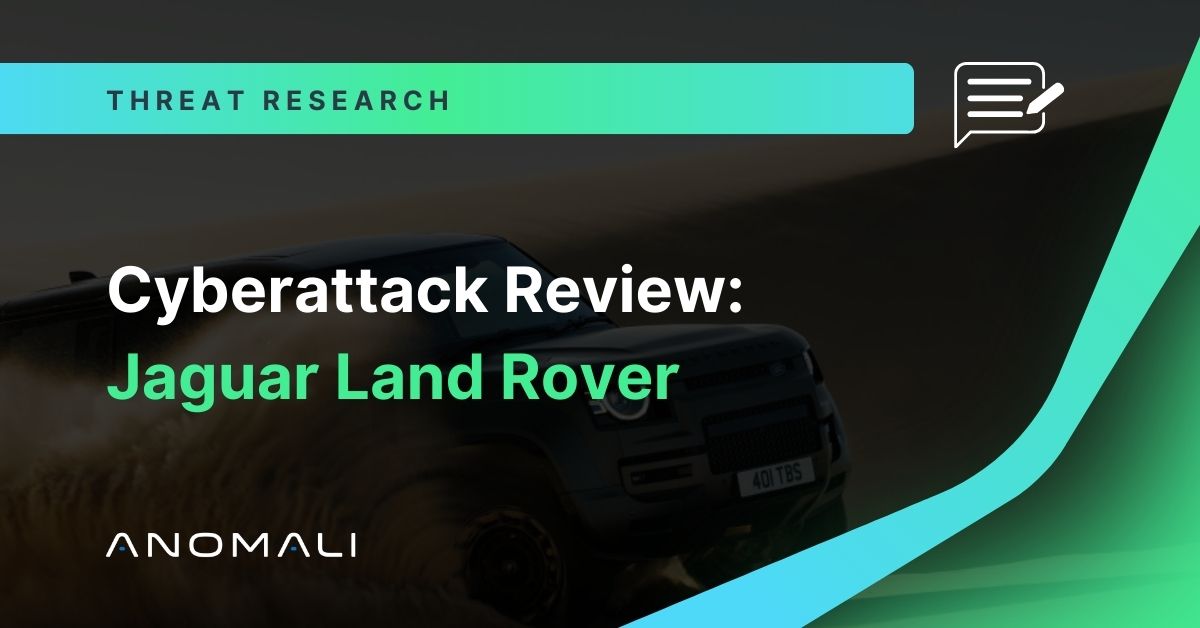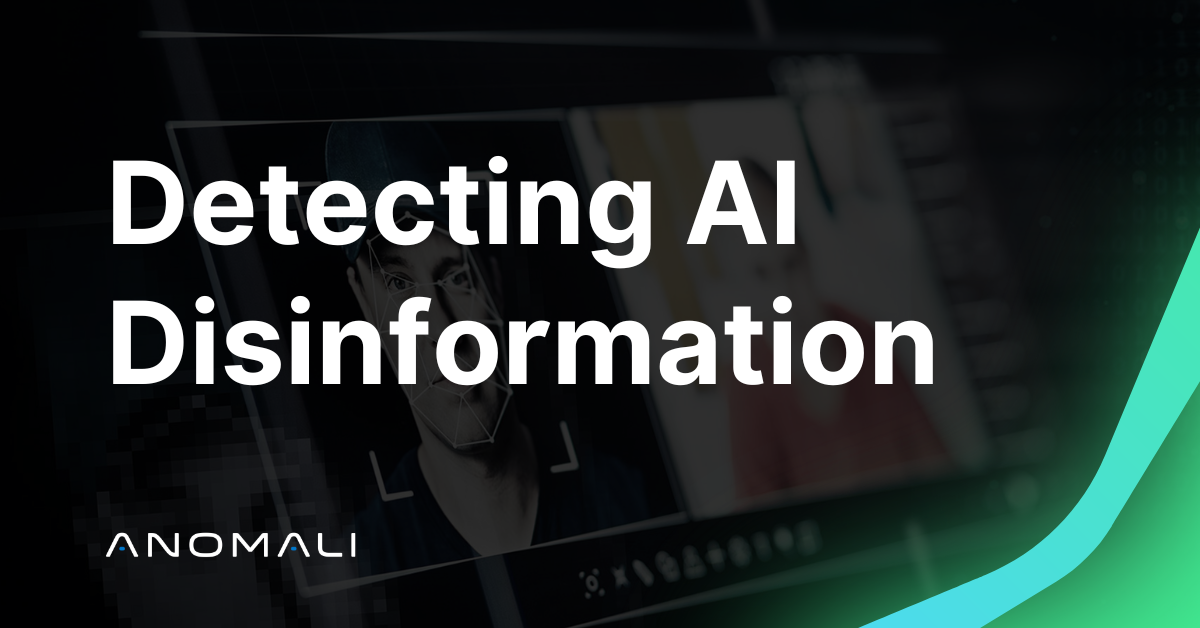One World, Many Threats: How Regional Realities Shape Global Cyber Defense
.jpg)

Cyber threats may transcend borders, but their character is deeply shaped by geography. Economic drivers, regulatory environments, and cultural context all influence how attackers operate and how defenders respond.
Anomali’s Protect Virtual Conference: Asia-Pacific & Japan brought these nuances into sharp focus. Security leaders George Moser and Christian Karam explored how regional dynamics—from North America’s mature economies to Europe’s regulatory rigor and APJ’s rapid digital expansion—define today’s global threat landscape.
Their insights reveal not only how adversaries adapt to local conditions, but also what global defenders can learn from each region’s experience.
Regional Difference: Three Landscapes, Three Distinct Challenges
North America: High Value, High Velocity
“In North America, ransomware reigns king. Supply chain attacks are very common, as are business email compromise attacks and critical infrastructure attacks,” explained George Moser, Anomali’s Chief Growth Officer. “There’s very high enterprise value in the US, organizations are well insured, and the US is a global ransomware hotspot.”
That combination of high enterprise value, broad insurance coverage, and interconnected supply chains makes U.S. organizations particularly enticing targets. Attackers follow the money, resulting in persistent waves of ransomware and supply chain compromise that dominate headlines and drain resources.
Europe: Regulation Meets Realpolitik
Europe’s landscape, by contrast, is defined as much by policy as by technology. “In Europe, you have heavy regulation like GDPR, the Ukraine war, and fragmented defenses across the EU. Data extortion is the name of the game,” said Moser.
Here, compliance isn’t just a legal requirement, but a tactical opportunity for attackers. Threat actors exploit privacy laws and regulatory pressure points to amplify extortion attempts, while espionage, energy-sector, and critical infrastructure attacks reflect broader geopolitical tensions. Risk is measured not only in breaches, but in reputational and regulatory fallout.
APJ (Asia Pacific & Japan): Innovation, Fragmentation, and Asymmetric Risk
In Asia-Pacific and Japan, the pace of digital transformation is reshaping the security landscape faster than anywhere else. “A lot of manufacturing, especially in the semiconductor area, is centered in the region. Espionage and intellectual property theft are big deals. Crypto theft is huge,” noted Moser. “With China, North Korea, rapid digital growth, and uneven defenses, there’s a high focus on crypto and mobile-targeted attacks here compared to the others.”
Christian Karam, Senior Advisor at Anomali, added, “APJ is a massive region with a lot of fragmentation and asymmetry. Unlike North America and Europe, it lacks homogeneous, standardized regulations. Different countries, languages, cultures, and regulatory maturity all create uneven defenses. At the same time, the region has huge momentum toward innovation and digitization. Attackers exploit this unevenness.”
In a region of rapid growth and diverse governance, cybercriminals thrive on disparity — moving fluidly across borders, technologies, and industries to exploit gaps in policy and infrastructure.
Regulation and Cross-Border Challenges
Effective defense in APJ demands coordination across a patchwork of jurisdictions. “Back in my Interpol days, we spent a lot of time on transnational operations, sharing intelligence across borders. It required diligence and trust to catch attackers,” Karam recalled.
By contrast, Europe’s more unified regulatory framework enables structured collaboration among national authorities, but it also introduces high-stakes compliance risk. As penalties for breaches climb, attackers increasingly turn regulation itself into a weapon, leveraging the fear of fines and disclosure to pressure victims into paying.
Attack Motivations Across Regions
While methods overlap, motivations diverge:
- North America: Ransomware, business email compromise, and critical infrastructure attacks — driven by profit and scale.
- Europe: Espionage and data extortion — driven by influence and regulatory leverage.
- APJ: Intellectual property and crypto theft — driven by industrial competition and uneven defenses.
Each region offers a mirror to the others. Where North America faces financial targeting, Europe grapples with trust and compliance, and APJ with asymmetry and acceleration.
Lessons for Global Defenders
As organizations operate across these regions, their cybersecurity strategies must evolve from generic to geo-aware. That is, tailored to local risks, regulations, and realities. The panelists agreed that resilience starts with understanding context.
“Align cyber risk to enterprise strategy,” advised Moser. “In APJ, that means mapping fraud, mobile malware, geopolitical pressures, supply chain risks, and customer trust directly to business growth. The best outcome is predicting and preventing incidents before they happen.”
No matter where an organization is located, certain cybersecurity priorities remain universal. As attacker tactics evolve, the core pillars of an effective defense are remarkably consistent:
- Align Security with Business Goals: Deeply understand your organization’s DNA, business objectives, and critical assets before tailoring cyber strategies to protect what matters most.
- Prioritize Proactive Intelligence: Move beyond reactive threat detection by operationalizing managed intelligence and enabling teams to anticipate emerging risks.
- Communicate in Business Terms: Translate cyber risk into language that boards and leadership understand by framing cybersecurity as a strategic enabler of trust, growth, and resilience.
- Leverage AI and Automation: Use AI to amplify analysts, automate triage, reduce noise, and bridge talent gaps.
- Build Resilience and Test Regularly: Embed cyber risk into enterprise risk management. Continuously test defenses, simulate real-world attacks, and ensure your organization can withstand and recover from incidents.
Global Threat Landscape Takeaway
Threats evolve with context, but the mission remains the same: protect what drives value. Whether facing ransomware in North America, data extortion in Europe, or crypto theft in APJ, defenders share a common challenge: to anticipate, adapt, and act faster than their adversaries.
By aligning intelligence, technology, and strategy, organizations can build security programs as dynamic as the threats they face and turn regional insights into a unified advantage on the global stage.
Watch the full fireside chat here.
Discover More About Anomali
Get the latest news about cybersecurity, threat intelligence, and Anomali's Security and IT Operations platform.
Propel your mission with amplified visibility, analytics, and AI.
Learn how Anomali can help you cost-effectively improve your security posture.




